Do you have a question about the MOTO GUZZI V85 TT and is the answer not in the manual?
Exhaust emissions contain poisonous carbon monoxide gas. Avoid inhalation.
Fuel is highly flammable and explosive. Refuel in ventilated areas, avoid sparks.
Engine and exhaust components remain hot after shutdown. Use caution when handling.
Illuminated alarm lamps indicate abnormalities or low oil pressure. Shut off engine.
Advisable to wear gloves. Dispose of used oil responsibly. Wash hands after handling.
Brake fluid is harmful to paintwork, plastic, and rubber. Protect eyes and skin.
Battery electrolyte is toxic and corrosive. Avoid contact with skin and eyes. Battery releases explosive gases.
Report safety defects. Be cautious with connector installation to avoid operational compromise.
Diagrams and keys identifying main motorcycle components and dashboard elements.
Explains various indicator lights, LCD display functions, and system alarms for monitoring vehicle status.
Details riding modes (ROAD, RAIN, OFF ROAD) and advanced control systems like ABS and MGCT.
Navigating the menu system to adjust display, clock, units, languages, and other settings.
Covers the immobilizer system, alarms, user code management, and ignition switch functions.
Operation of turn signals, high/low beam selector, passing button, and hazard flashers.
Information on heated handgrips, start/stop buttons, cruise control, saddle operation, and USB port.
Locating identification numbers and adjusting the windscreen for rider comfort.
Essential preliminary checks for safe operation. Vehicle indicates real-time failures.
Procedure for refuelling, including fuel tank capacity and ethanol content limits.
Adjusting the spring preload on the rear shock absorber for load variations.
Instructions for adjusting front fork preload and rebound damping. Contact dealer for oil replacement.
Adjusts lever distance and checks cable tension for optimal clutch operation.
Rules for the first 1,500 km to ensure vehicle reliability and performance.
Procedure for starting the engine, with emphasis on caution and ventilation.
Guidance on moving off, riding, passenger instructions, and side stand retraction.
Procedure for stopping the engine, including neutral gear selection and brake application.
Important guidelines for selecting an adequate parking spot and ensuring vehicle stability.
Tips for preventing theft, including using steering lock, safe parking, and anti-theft devices.
Tips for safer riding, emphasizing mechanical knowledge, familiarization, and helmet use.
Recommendations for safe mounting and dismounting, rider and passenger roles.
Introduction to scheduled maintenance, owner capabilities, and service center advice.
Instructions for checking engine oil level frequently, especially after journeys.
Procedure for topping up engine oil, recommending specific oil types and cleanliness.
Regularly check bevel gear oil level and change oil per schedule. Check sealing washer.
Importance of checking tyre pressure, wear, and potential damage for safe handling.
Spark plug removal, check, and replacement must be done by an Official Moto Guzzi Dealer.
Procedure for checking front and rear brake fluid levels, noting gradual decrease with pad wear.
Steps for safely removing the motorcycle battery, involving saddle and glove box removal.
Instructions for charging the battery, including charger selection and charge modes.
Information on fuses, precautions against repair, and checking for blown fuses.
Procedure for checking and adjusting the vertical direction of the headlight beam.
Checking disc and pad wear. Cautions about dirty discs and worn pads.
Measures to avoid side effects of not using the scooter and preparing for garaging.
Recommended cleaning methods, products, and precautions for different parts.
Details of the vehicle's overall weight, dimensions, and wheelbase.
Technical data for the engine, including type, capacity, bore/stroke, and idle speed.
Lists capacities for fuel tank, reserve, engine oil, and gearbox oil.
Includes primary drive ratio, gear ratios for all gears, and final drive ratio.
Details front fork diameter and stroke, and rear swingarm with shock absorber.
Details front and rear brake disc sizes, caliper types, and piston diameters.
Lists tyre sizes and recommended inflation pressures for front and rear.
Details battery voltage/capacity, fuse ratings, and alternator power.
Importance of adequate maintenance for vehicle operation and performance. Reporting anomalies.
Table detailing maintenance tasks for spark plugs, bearings, brakes, filters, fluids, and controls.
Table detailing maintenance for fork oil/seals, tyres, clutch, bolts, suspension, and fuel lines.
List of recommended Castrol products for scheduled maintenance, including specifications.
Information on finding the nearest Official Dealer and Service Centre for maintenance and repairs.
Exhaust emissions contain poisonous carbon monoxide gas. Avoid inhalation.
Fuel is highly flammable and explosive. Refuel in ventilated areas, avoid sparks.
Engine and exhaust components remain hot after shutdown. Use caution when handling.
Illuminated alarm lamps indicate abnormalities or low oil pressure. Shut off engine.
Advisable to wear gloves. Dispose of used oil responsibly. Wash hands after handling.
Brake fluid is harmful to paintwork, plastic, and rubber. Protect eyes and skin.
Battery electrolyte is toxic and corrosive. Avoid contact with skin and eyes. Battery releases explosive gases.
Report safety defects. Be cautious with connector installation to avoid operational compromise.
Diagrams and keys identifying main motorcycle components and dashboard elements.
Explains various indicator lights, LCD display functions, and system alarms for monitoring vehicle status.
Details riding modes (ROAD, RAIN, OFF ROAD) and advanced control systems like ABS and MGCT.
Navigating the menu system to adjust display, clock, units, languages, and other settings.
Covers the immobilizer system, alarms, user code management, and ignition switch functions.
Operation of turn signals, high/low beam selector, passing button, and hazard flashers.
Information on heated handgrips, start/stop buttons, cruise control, saddle operation, and USB port.
Locating identification numbers and adjusting the windscreen for rider comfort.
Essential preliminary checks for safe operation. Vehicle indicates real-time failures.
Procedure for refuelling, including fuel tank capacity and ethanol content limits.
Adjusting the spring preload on the rear shock absorber for load variations.
Instructions for adjusting front fork preload and rebound damping. Contact dealer for oil replacement.
Adjusts lever distance and checks cable tension for optimal clutch operation.
Rules for the first 1,500 km to ensure vehicle reliability and performance.
Procedure for starting the engine, with emphasis on caution and ventilation.
Guidance on moving off, riding, passenger instructions, and side stand retraction.
Procedure for stopping the engine, including neutral gear selection and brake application.
Important guidelines for selecting an adequate parking spot and ensuring vehicle stability.
Tips for preventing theft, including using steering lock, safe parking, and anti-theft devices.
Tips for safer riding, emphasizing mechanical knowledge, familiarization, and helmet use.
Recommendations for safe mounting and dismounting, rider and passenger roles.
Introduction to scheduled maintenance, owner capabilities, and service center advice.
Instructions for checking engine oil level frequently, especially after journeys.
Procedure for topping up engine oil, recommending specific oil types and cleanliness.
Regularly check bevel gear oil level and change oil per schedule. Check sealing washer.
Importance of checking tyre pressure, wear, and potential damage for safe handling.
Spark plug removal, check, and replacement must be done by an Official Moto Guzzi Dealer.
Procedure for checking front and rear brake fluid levels, noting gradual decrease with pad wear.
Steps for safely removing the motorcycle battery, involving saddle and glove box removal.
Instructions for charging the battery, including charger selection and charge modes.
Information on fuses, precautions against repair, and checking for blown fuses.
Procedure for checking and adjusting the vertical direction of the headlight beam.
Checking disc and pad wear. Cautions about dirty discs and worn pads.
Measures to avoid side effects of not using the scooter and preparing for garaging.
Recommended cleaning methods, products, and precautions for different parts.
Details of the vehicle's overall weight, dimensions, and wheelbase.
Technical data for the engine, including type, capacity, bore/stroke, and idle speed.
Lists capacities for fuel tank, reserve, engine oil, and gearbox oil.
Includes primary drive ratio, gear ratios for all gears, and final drive ratio.
Details front fork diameter and stroke, and rear swingarm with shock absorber.
Details front and rear brake disc sizes, caliper types, and piston diameters.
Lists tyre sizes and recommended inflation pressures for front and rear.
Details battery voltage/capacity, fuse ratings, and alternator power.
Importance of adequate maintenance for vehicle operation and performance. Reporting anomalies.
Table detailing maintenance tasks for spark plugs, bearings, brakes, filters, fluids, and controls.
Table detailing maintenance for fork oil/seals, tyres, clutch, bolts, suspension, and fuel lines.
List of recommended Castrol products for scheduled maintenance, including specifications.
Information on finding the nearest Official Dealer and Service Centre for maintenance and repairs.
| Displacement | 853 cc |
|---|---|
| Transmission | 6-speed |
| ABS | Standard |
| Traction Control | Standard |
| Bore x Stroke | 84 mm x 77 mm |
| Compression Ratio | 10.5:1 |
| Fuel System | Electronic fuel injection |
| Final Drive | Shaft drive |
| Tire Front | 110/80 R19 |
| Tire Rear | 150/70 R17 |
| Engine Type | Air-cooled, 90° V-twin |
| Max Torque | 82 Nm @ 5, 000 rpm |
| Fuel Capacity | 6.1 US gal (23 l) |
| Seat Height | 830 mm (32.7 in) |
| Dry Weight | 208 kg |
| Front Suspension | 41 mm telescopic fork, 170 mm travel |
| Front Brake | 320 mm double disc, Brembo 4-piston calipers |
| Rear Brake | 260 mm disc, 2-piston caliper |
| Wheelbase | 1, 530 mm |
| Rear Suspension | Double-sided swingarm with adjustable preload and rebound |
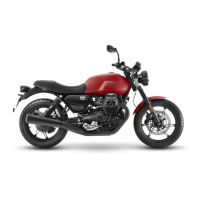
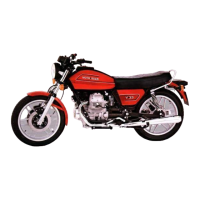
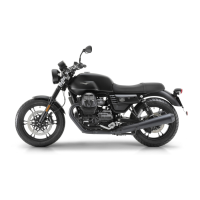
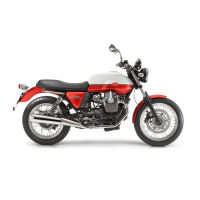
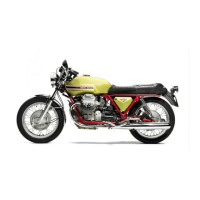


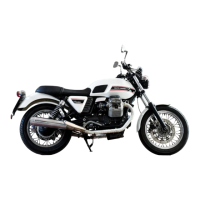

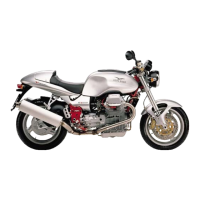
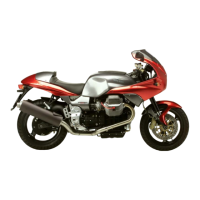

